-
EXECUTIVE SUMMARY
-
1.1.
-
Market Overview
-
Key Findings
-
Market Segmentation
-
1.4.
-
Competitive Landscape
-
Challenges and Opportunities
-
Future
-
Outlook
-
MARKET INTRODUCTION
-
Definition
-
Scope of the study
- Research Objective
- Assumption
- Limitations
-
RESEARCH METHODOLOGY
-
Overview
-
3.2.
-
Data Mining
-
Secondary Research
-
Primary Research
- Breakdown of Primary
-
3.4.1.
-
Primary Interviews and Information Gathering Process
-
Respondents
-
Forecasting Model
-
Market Size Estimation
- Top-Down Approach
-
3.6.1.
-
Bottom-Up Approach
-
Data Triangulation
-
Validation
-
MARKET DYNAMICS
-
Overview
-
Drivers
-
Restraints
-
Opportunities
-
MARKET
-
FACTOR ANALYSIS
-
Value chain Analysis
-
Porter''s Five Forces
- Bargaining Power of Suppliers
- Bargaining Power
- Threat of New Entrants
- Threat of Substitutes
- Intensity of Rivalry
-
Analysis
-
of Buyers
-
COVID-19 Impact Analysis
- Regional Impact
- Opportunity and
-
5.3.1.
-
Market Impact Analysis
-
Threat Analysis
-
SNACK FOOD PACKAGING MARKET, BY MATERIAL
-
TYPE (USD BILLION)
-
Plastic
-
Paper
-
Metal
-
6.4.
-
Glass
-
Compostable
-
SNACK FOOD PACKAGING MARKET, BY PACKAGING
-
TYPE (USD BILLION)
-
Flexible Packaging
-
Rigid Packaging
-
Semi-Rigid Packaging
-
SNACK FOOD PACKAGING MARKET, BY PRODUCT TYPE
-
(USD BILLION)
-
Chips
-
Nuts
-
Granola Bars
-
8.4.
-
Popcorn
-
Baked Snacks
-
SNACK FOOD PACKAGING MARKET, BY END USE
-
(USD BILLION)
-
Retail
-
Food Service
-
Online Sales
-
SNACK FOOD PACKAGING MARKET, BY REGIONAL (USD BILLION)
-
North
- US
- Canada
-
America
-
Europe
- Germany
- UK
- France
- Russia
- Italy
- Spain
- Rest of Europe
-
APAC
- China
- India
- Japan
- South Korea
- Thailand
- Indonesia
- Rest of APAC
-
10.3.5.
-
Malaysia
-
South America
- Brazil
- Mexico
- Rest of South America
-
10.4.3.
-
Argentina
-
MEA
- GCC
- South Africa
- Rest of MEA
-
Countries
-
COMPETITIVE LANDSCAPE
-
Overview
-
Competitive Analysis
-
Market share Analysis
-
Major Growth Strategy in the Snack
-
Food Packaging Market
-
Competitive Benchmarking
-
Leading Players
- New Product Launch/Service
- Merger & Acquisitions
- Joint Ventures
-
in Terms of Number of Developments in the Snack Food Packaging Market
-
11.7.
-
Key developments and growth strategies
-
Deployment
-
Major Players Financial Matrix
- Sales and Operating Income
- Major Players R&D Expenditure. 2023
-
COMPANY PROFILES
-
Sonoco Products
- Financial Overview
- Products
- Key Developments
- SWOT Analysis
-
Offered
-
12.1.5.
-
Key Strategies
-
Huhtamaki
- Financial Overview
- Key Developments
- SWOT Analysis
- Key Strategies
-
12.2.2.
-
Products Offered
-
Tetra Pak
- Financial Overview
- Products Offered
- Key Developments
- SWOT
- Key Strategies
-
Analysis
-
Graham Packaging
- Products Offered
- Key Developments
- SWOT Analysis
- Key Strategies
-
12.4.1.
-
Financial Overview
-
Mondi
- Products Offered
- Key Developments
- SWOT Analysis
- Key Strategies
-
12.5.1.
-
Financial Overview
-
Berry Global
- Financial Overview
- Products Offered
- Key
- SWOT Analysis
- Key Strategies
- Financial Overview
- Products Offered
- Key Developments
- SWOT Analysis
- Key Strategies
-
Developments
-
12.7.
-
Ball Corporation
-
Constantia Flexibles
- Financial Overview
- Key Developments
- SWOT Analysis
- Key Strategies
-
12.8.2.
-
Products Offered
-
Graphic Packaging International
- Products Offered
- Key Developments
- SWOT Analysis
- Key Strategies
-
12.9.1.
-
Financial Overview
-
Novolex
- Financial Overview
- Products Offered
- Key
- SWOT Analysis
- Key Strategies
- Financial Overview
- Products Offered
- SWOT Analysis
- Key Strategies
-
Developments
-
12.11.
-
Amcor
-
12.11.3.
-
Key Developments
-
Sealed Air
- Financial Overview
- Products Offered
- Key Developments
- SWOT Analysis
- Key
-
Strategies
-
Smurfit Kappa
- Financial Overview
- Key Developments
- SWOT Analysis
- Key Strategies
-
12.13.2.
-
Products Offered
-
Crown Holdings
- Financial Overview
- Products Offered
- Key Developments
- SWOT
- Key Strategies
-
Analysis
-
Britton Group
- Products Offered
- Key Developments
- SWOT Analysis
- Key Strategies
-
12.15.1.
-
Financial Overview
-
APPENDIX
-
References
-
Related Reports
-
LIST OF TABLES
-
TABLE
-
LIST OF ASSUMPTIONS
-
NORTH AMERICA SNACK FOOD PACKAGING MARKET
-
SIZE ESTIMATES & FORECAST, BY MATERIAL TYPE, 2019-2032 (USD BILLIONS)
-
TABLE
-
NORTH AMERICA SNACK FOOD PACKAGING MARKET SIZE ESTIMATES & FORECAST, BY PACKAGING
-
TYPE, 2019-2032 (USD BILLIONS)
-
NORTH AMERICA SNACK FOOD PACKAGING
-
MARKET SIZE ESTIMATES & FORECAST, BY PRODUCT TYPE, 2019-2032 (USD BILLIONS)
-
NORTH AMERICA SNACK FOOD PACKAGING MARKET SIZE ESTIMATES & FORECAST,
-
BY END USE, 2019-2032 (USD BILLIONS)
-
NORTH AMERICA SNACK FOOD PACKAGING
-
MARKET SIZE ESTIMATES & FORECAST, BY REGIONAL, 2019-2032 (USD BILLIONS)
-
US SNACK FOOD PACKAGING MARKET SIZE ESTIMATES & FORECAST, BY MATERIAL
-
TYPE, 2019-2032 (USD BILLIONS)
-
US SNACK FOOD PACKAGING MARKET SIZE
-
ESTIMATES & FORECAST, BY PACKAGING TYPE, 2019-2032 (USD BILLIONS)
-
TABLE
-
US SNACK FOOD PACKAGING MARKET SIZE ESTIMATES & FORECAST, BY PRODUCT TYPE,
-
US SNACK FOOD PACKAGING MARKET SIZE ESTIMATES
-
& FORECAST, BY END USE, 2019-2032 (USD BILLIONS)
-
US SNACK FOOD
-
PACKAGING MARKET SIZE ESTIMATES & FORECAST, BY REGIONAL, 2019-2032 (USD BILLIONS)
-
CANADA SNACK FOOD PACKAGING MARKET SIZE ESTIMATES & FORECAST,
-
BY MATERIAL TYPE, 2019-2032 (USD BILLIONS)
-
CANADA SNACK FOOD PACKAGING
-
MARKET SIZE ESTIMATES & FORECAST, BY PACKAGING TYPE, 2019-2032 (USD BILLIONS)
-
CANADA SNACK FOOD PACKAGING MARKET SIZE ESTIMATES & FORECAST,
-
BY PRODUCT TYPE, 2019-2032 (USD BILLIONS)
-
CANADA SNACK FOOD PACKAGING
-
MARKET SIZE ESTIMATES & FORECAST, BY END USE, 2019-2032 (USD BILLIONS)
-
TABLE
-
CANADA SNACK FOOD PACKAGING MARKET SIZE ESTIMATES & FORECAST, BY REGIONAL,
-
EUROPE SNACK FOOD PACKAGING MARKET SIZE
-
ESTIMATES & FORECAST, BY MATERIAL TYPE, 2019-2032 (USD BILLIONS)
-
TABLE
-
EUROPE SNACK FOOD PACKAGING MARKET SIZE ESTIMATES & FORECAST, BY PACKAGING
-
TYPE, 2019-2032 (USD BILLIONS)
-
EUROPE SNACK FOOD PACKAGING MARKET
-
SIZE ESTIMATES & FORECAST, BY PRODUCT TYPE, 2019-2032 (USD BILLIONS)
-
TABLE
-
EUROPE SNACK FOOD PACKAGING MARKET SIZE ESTIMATES & FORECAST, BY END USE,
-
EUROPE SNACK FOOD PACKAGING MARKET SIZE
-
ESTIMATES & FORECAST, BY REGIONAL, 2019-2032 (USD BILLIONS)
-
TABLE 22.
-
GERMANY SNACK FOOD PACKAGING MARKET SIZE ESTIMATES & FORECAST, BY MATERIAL TYPE,
-
GERMANY SNACK FOOD PACKAGING MARKET SIZE
-
ESTIMATES & FORECAST, BY PACKAGING TYPE, 2019-2032 (USD BILLIONS)
-
TABLE
-
GERMANY SNACK FOOD PACKAGING MARKET SIZE ESTIMATES & FORECAST, BY PRODUCT
-
TYPE, 2019-2032 (USD BILLIONS)
-
GERMANY SNACK FOOD PACKAGING MARKET
-
SIZE ESTIMATES & FORECAST, BY END USE, 2019-2032 (USD BILLIONS)
-
TABLE
-
GERMANY SNACK FOOD PACKAGING MARKET SIZE ESTIMATES & FORECAST, BY REGIONAL,
-
UK SNACK FOOD PACKAGING MARKET SIZE ESTIMATES
-
& FORECAST, BY MATERIAL TYPE, 2019-2032 (USD BILLIONS)
-
UK SNACK
-
FOOD PACKAGING MARKET SIZE ESTIMATES & FORECAST, BY PACKAGING TYPE, 2019-2032
-
(USD BILLIONS)
-
UK SNACK FOOD PACKAGING MARKET SIZE ESTIMATES &
-
FORECAST, BY PRODUCT TYPE, 2019-2032 (USD BILLIONS)
-
UK SNACK FOOD
-
PACKAGING MARKET SIZE ESTIMATES & FORECAST, BY END USE, 2019-2032 (USD BILLIONS)
-
UK SNACK FOOD PACKAGING MARKET SIZE ESTIMATES & FORECAST, BY
-
REGIONAL, 2019-2032 (USD BILLIONS)
-
FRANCE SNACK FOOD PACKAGING MARKET
-
SIZE ESTIMATES & FORECAST, BY MATERIAL TYPE, 2019-2032 (USD BILLIONS)
-
TABLE
-
FRANCE SNACK FOOD PACKAGING MARKET SIZE ESTIMATES & FORECAST, BY PACKAGING
-
TYPE, 2019-2032 (USD BILLIONS)
-
FRANCE SNACK FOOD PACKAGING MARKET
-
SIZE ESTIMATES & FORECAST, BY PRODUCT TYPE, 2019-2032 (USD BILLIONS)
-
TABLE
-
FRANCE SNACK FOOD PACKAGING MARKET SIZE ESTIMATES & FORECAST, BY END USE,
-
FRANCE SNACK FOOD PACKAGING MARKET SIZE
-
ESTIMATES & FORECAST, BY REGIONAL, 2019-2032 (USD BILLIONS)
-
TABLE 37.
-
RUSSIA SNACK FOOD PACKAGING MARKET SIZE ESTIMATES & FORECAST, BY MATERIAL TYPE,
-
RUSSIA SNACK FOOD PACKAGING MARKET SIZE
-
ESTIMATES & FORECAST, BY PACKAGING TYPE, 2019-2032 (USD BILLIONS)
-
TABLE
-
RUSSIA SNACK FOOD PACKAGING MARKET SIZE ESTIMATES & FORECAST, BY PRODUCT
-
TYPE, 2019-2032 (USD BILLIONS)
-
RUSSIA SNACK FOOD PACKAGING MARKET
-
SIZE ESTIMATES & FORECAST, BY END USE, 2019-2032 (USD BILLIONS)
-
TABLE
-
RUSSIA SNACK FOOD PACKAGING MARKET SIZE ESTIMATES & FORECAST, BY REGIONAL,
-
ITALY SNACK FOOD PACKAGING MARKET SIZE
-
ESTIMATES & FORECAST, BY MATERIAL TYPE, 2019-2032 (USD BILLIONS)
-
TABLE
-
ITALY SNACK FOOD PACKAGING MARKET SIZE ESTIMATES & FORECAST, BY PACKAGING
-
TYPE, 2019-2032 (USD BILLIONS)
-
ITALY SNACK FOOD PACKAGING MARKET
-
SIZE ESTIMATES & FORECAST, BY PRODUCT TYPE, 2019-2032 (USD BILLIONS)
-
TABLE
-
ITALY SNACK FOOD PACKAGING MARKET SIZE ESTIMATES & FORECAST, BY END USE,
-
ITALY SNACK FOOD PACKAGING MARKET SIZE
-
ESTIMATES & FORECAST, BY REGIONAL, 2019-2032 (USD BILLIONS)
-
TABLE 47.
-
SPAIN SNACK FOOD PACKAGING MARKET SIZE ESTIMATES & FORECAST, BY MATERIAL TYPE,
-
SPAIN SNACK FOOD PACKAGING MARKET SIZE
-
ESTIMATES & FORECAST, BY PACKAGING TYPE, 2019-2032 (USD BILLIONS)
-
TABLE
-
SPAIN SNACK FOOD PACKAGING MARKET SIZE ESTIMATES & FORECAST, BY PRODUCT
-
TYPE, 2019-2032 (USD BILLIONS)
-
SPAIN SNACK FOOD PACKAGING MARKET
-
SIZE ESTIMATES & FORECAST, BY END USE, 2019-2032 (USD BILLIONS)
-
TABLE
-
SPAIN SNACK FOOD PACKAGING MARKET SIZE ESTIMATES & FORECAST, BY REGIONAL,
-
REST OF EUROPE SNACK FOOD PACKAGING MARKET
-
SIZE ESTIMATES & FORECAST, BY MATERIAL TYPE, 2019-2032 (USD BILLIONS)
-
TABLE
-
REST OF EUROPE SNACK FOOD PACKAGING MARKET SIZE ESTIMATES & FORECAST, BY
-
PACKAGING TYPE, 2019-2032 (USD BILLIONS)
-
REST OF EUROPE SNACK FOOD
-
PACKAGING MARKET SIZE ESTIMATES & FORECAST, BY PRODUCT TYPE, 2019-2032 (USD
-
BILLIONS)
-
REST OF EUROPE SNACK FOOD PACKAGING MARKET SIZE ESTIMATES
-
& FORECAST, BY END USE, 2019-2032 (USD BILLIONS)
-
REST OF EUROPE
-
SNACK FOOD PACKAGING MARKET SIZE ESTIMATES & FORECAST, BY REGIONAL, 2019-2032
-
(USD BILLIONS)
-
APAC SNACK FOOD PACKAGING MARKET SIZE ESTIMATES &
-
FORECAST, BY MATERIAL TYPE, 2019-2032 (USD BILLIONS)
-
APAC SNACK
-
FOOD PACKAGING MARKET SIZE ESTIMATES & FORECAST, BY PACKAGING TYPE, 2019-2032
-
(USD BILLIONS)
-
APAC SNACK FOOD PACKAGING MARKET SIZE ESTIMATES &
-
FORECAST, BY PRODUCT TYPE, 2019-2032 (USD BILLIONS)
-
APAC SNACK FOOD
-
PACKAGING MARKET SIZE ESTIMATES & FORECAST, BY END USE, 2019-2032 (USD BILLIONS)
-
APAC SNACK FOOD PACKAGING MARKET SIZE ESTIMATES & FORECAST,
-
BY REGIONAL, 2019-2032 (USD BILLIONS)
-
CHINA SNACK FOOD PACKAGING
-
MARKET SIZE ESTIMATES & FORECAST, BY MATERIAL TYPE, 2019-2032 (USD BILLIONS)
-
CHINA SNACK FOOD PACKAGING MARKET SIZE ESTIMATES & FORECAST,
-
BY PACKAGING TYPE, 2019-2032 (USD BILLIONS)
-
CHINA SNACK FOOD PACKAGING
-
MARKET SIZE ESTIMATES & FORECAST, BY PRODUCT TYPE, 2019-2032 (USD BILLIONS)
-
CHINA SNACK FOOD PACKAGING MARKET SIZE ESTIMATES & FORECAST,
-
BY END USE, 2019-2032 (USD BILLIONS)
-
CHINA SNACK FOOD PACKAGING
-
MARKET SIZE ESTIMATES & FORECAST, BY REGIONAL, 2019-2032 (USD BILLIONS)
-
INDIA SNACK FOOD PACKAGING MARKET SIZE ESTIMATES & FORECAST, BY
-
MATERIAL TYPE, 2019-2032 (USD BILLIONS)
-
INDIA SNACK FOOD PACKAGING
-
MARKET SIZE ESTIMATES & FORECAST, BY PACKAGING TYPE, 2019-2032 (USD BILLIONS)
-
INDIA SNACK FOOD PACKAGING MARKET SIZE ESTIMATES & FORECAST,
-
BY PRODUCT TYPE, 2019-2032 (USD BILLIONS)
-
INDIA SNACK FOOD PACKAGING
-
MARKET SIZE ESTIMATES & FORECAST, BY END USE, 2019-2032 (USD BILLIONS)
-
TABLE
-
INDIA SNACK FOOD PACKAGING MARKET SIZE ESTIMATES & FORECAST, BY REGIONAL,
-
JAPAN SNACK FOOD PACKAGING MARKET SIZE
-
ESTIMATES & FORECAST, BY MATERIAL TYPE, 2019-2032 (USD BILLIONS)
-
TABLE
-
JAPAN SNACK FOOD PACKAGING MARKET SIZE ESTIMATES & FORECAST, BY PACKAGING
-
TYPE, 2019-2032 (USD BILLIONS)
-
JAPAN SNACK FOOD PACKAGING MARKET
-
SIZE ESTIMATES & FORECAST, BY PRODUCT TYPE, 2019-2032 (USD BILLIONS)
-
TABLE
-
JAPAN SNACK FOOD PACKAGING MARKET SIZE ESTIMATES & FORECAST, BY END USE,
-
JAPAN SNACK FOOD PACKAGING MARKET SIZE
-
ESTIMATES & FORECAST, BY REGIONAL, 2019-2032 (USD BILLIONS)
-
TABLE 77.
-
SOUTH KOREA SNACK FOOD PACKAGING MARKET SIZE ESTIMATES & FORECAST, BY MATERIAL
-
TYPE, 2019-2032 (USD BILLIONS)
-
SOUTH KOREA SNACK FOOD PACKAGING
-
MARKET SIZE ESTIMATES & FORECAST, BY PACKAGING TYPE, 2019-2032 (USD BILLIONS)
-
SOUTH KOREA SNACK FOOD PACKAGING MARKET SIZE ESTIMATES & FORECAST,
-
BY PRODUCT TYPE, 2019-2032 (USD BILLIONS)
-
SOUTH KOREA SNACK FOOD
-
PACKAGING MARKET SIZE ESTIMATES & FORECAST, BY END USE, 2019-2032 (USD BILLIONS)
-
SOUTH KOREA SNACK FOOD PACKAGING MARKET SIZE ESTIMATES & FORECAST,
-
BY REGIONAL, 2019-2032 (USD BILLIONS)
-
MALAYSIA SNACK FOOD PACKAGING
-
MARKET SIZE ESTIMATES & FORECAST, BY MATERIAL TYPE, 2019-2032 (USD BILLIONS)
-
MALAYSIA SNACK FOOD PACKAGING MARKET SIZE ESTIMATES & FORECAST,
-
BY PACKAGING TYPE, 2019-2032 (USD BILLIONS)
-
MALAYSIA SNACK FOOD
-
PACKAGING MARKET SIZE ESTIMATES & FORECAST, BY PRODUCT TYPE, 2019-2032 (USD
-
BILLIONS)
-
MALAYSIA SNACK FOOD PACKAGING MARKET SIZE ESTIMATES &
-
FORECAST, BY END USE, 2019-2032 (USD BILLIONS)
-
MALAYSIA SNACK FOOD
-
PACKAGING MARKET SIZE ESTIMATES & FORECAST, BY REGIONAL, 2019-2032 (USD BILLIONS)
-
THAILAND SNACK FOOD PACKAGING MARKET SIZE ESTIMATES & FORECAST,
-
BY MATERIAL TYPE, 2019-2032 (USD BILLIONS)
-
THAILAND SNACK FOOD PACKAGING
-
MARKET SIZE ESTIMATES & FORECAST, BY PACKAGING TYPE, 2019-2032 (USD BILLIONS)
-
THAILAND SNACK FOOD PACKAGING MARKET SIZE ESTIMATES & FORECAST,
-
BY PRODUCT TYPE, 2019-2032 (USD BILLIONS)
-
THAILAND SNACK FOOD PACKAGING
-
MARKET SIZE ESTIMATES & FORECAST, BY END USE, 2019-2032 (USD BILLIONS)
-
TABLE
-
THAILAND SNACK FOOD PACKAGING MARKET SIZE ESTIMATES & FORECAST, BY REGIONAL,
-
INDONESIA SNACK FOOD PACKAGING MARKET SIZE
-
ESTIMATES & FORECAST, BY MATERIAL TYPE, 2019-2032 (USD BILLIONS)
-
TABLE
-
INDONESIA SNACK FOOD PACKAGING MARKET SIZE ESTIMATES & FORECAST, BY PACKAGING
-
TYPE, 2019-2032 (USD BILLIONS)
-
INDONESIA SNACK FOOD PACKAGING MARKET
-
SIZE ESTIMATES & FORECAST, BY PRODUCT TYPE, 2019-2032 (USD BILLIONS)
-
TABLE
-
INDONESIA SNACK FOOD PACKAGING MARKET SIZE ESTIMATES & FORECAST, BY END
-
USE, 2019-2032 (USD BILLIONS)
-
INDONESIA SNACK FOOD PACKAGING MARKET
-
SIZE ESTIMATES & FORECAST, BY REGIONAL, 2019-2032 (USD BILLIONS)
-
TABLE
-
REST OF APAC SNACK FOOD PACKAGING MARKET SIZE ESTIMATES & FORECAST, BY MATERIAL
-
TYPE, 2019-2032 (USD BILLIONS)
-
REST OF APAC SNACK FOOD PACKAGING
-
MARKET SIZE ESTIMATES & FORECAST, BY PACKAGING TYPE, 2019-2032 (USD BILLIONS)
-
REST OF APAC SNACK FOOD PACKAGING MARKET SIZE ESTIMATES & FORECAST,
-
BY PRODUCT TYPE, 2019-2032 (USD BILLIONS)
-
REST OF APAC SNACK FOOD
-
PACKAGING MARKET SIZE ESTIMATES & FORECAST, BY END USE, 2019-2032 (USD BILLIONS)
-
REST OF APAC SNACK FOOD PACKAGING MARKET SIZE ESTIMATES & FORECAST,
-
BY REGIONAL, 2019-2032 (USD BILLIONS)
-
SOUTH AMERICA SNACK FOOD
-
PACKAGING MARKET SIZE ESTIMATES & FORECAST, BY MATERIAL TYPE, 2019-2032 (USD
-
BILLIONS)
-
SOUTH AMERICA SNACK FOOD PACKAGING MARKET SIZE ESTIMATES
-
& FORECAST, BY PACKAGING TYPE, 2019-2032 (USD BILLIONS)
-
SOUTH
-
AMERICA SNACK FOOD PACKAGING MARKET SIZE ESTIMATES & FORECAST, BY PRODUCT TYPE,
-
SOUTH AMERICA SNACK FOOD PACKAGING MARKET
-
SIZE ESTIMATES & FORECAST, BY END USE, 2019-2032 (USD BILLIONS)
-
TABLE
-
SOUTH AMERICA SNACK FOOD PACKAGING MARKET SIZE ESTIMATES & FORECAST, BY
-
REGIONAL, 2019-2032 (USD BILLIONS)
-
BRAZIL SNACK FOOD PACKAGING
-
MARKET SIZE ESTIMATES & FORECAST, BY MATERIAL TYPE, 2019-2032 (USD BILLIONS)
-
BRAZIL SNACK FOOD PACKAGING MARKET SIZE ESTIMATES & FORECAST,
-
BY PACKAGING TYPE, 2019-2032 (USD BILLIONS)
-
BRAZIL SNACK FOOD PACKAGING
-
MARKET SIZE ESTIMATES & FORECAST, BY PRODUCT TYPE, 2019-2032 (USD BILLIONS)
-
BRAZIL SNACK FOOD PACKAGING MARKET SIZE ESTIMATES & FORECAST,
-
BY END USE, 2019-2032 (USD BILLIONS)
-
BRAZIL SNACK FOOD PACKAGING
-
MARKET SIZE ESTIMATES & FORECAST, BY REGIONAL, 2019-2032 (USD BILLIONS)
-
MEXICO SNACK FOOD PACKAGING MARKET SIZE ESTIMATES & FORECAST, BY
-
MATERIAL TYPE, 2019-2032 (USD BILLIONS)
-
MEXICO SNACK FOOD PACKAGING
-
MARKET SIZE ESTIMATES & FORECAST, BY PACKAGING TYPE, 2019-2032 (USD BILLIONS)
-
MEXICO SNACK FOOD PACKAGING MARKET SIZE ESTIMATES & FORECAST,
-
BY PRODUCT TYPE, 2019-2032 (USD BILLIONS)
-
MEXICO SNACK FOOD PACKAGING
-
MARKET SIZE ESTIMATES & FORECAST, BY END USE, 2019-2032 (USD BILLIONS)
-
TABLE
-
MEXICO SNACK FOOD PACKAGING MARKET SIZE ESTIMATES & FORECAST, BY REGIONAL,
-
ARGENTINA SNACK FOOD PACKAGING MARKET
-
SIZE ESTIMATES & FORECAST, BY MATERIAL TYPE, 2019-2032 (USD BILLIONS)
-
TABLE
-
ARGENTINA SNACK FOOD PACKAGING MARKET SIZE ESTIMATES & FORECAST, BY PACKAGING
-
TYPE, 2019-2032 (USD BILLIONS)
-
ARGENTINA SNACK FOOD PACKAGING MARKET
-
SIZE ESTIMATES & FORECAST, BY PRODUCT TYPE, 2019-2032 (USD BILLIONS)
-
TABLE
-
ARGENTINA SNACK FOOD PACKAGING MARKET SIZE ESTIMATES & FORECAST, BY END
-
USE, 2019-2032 (USD BILLIONS)
-
ARGENTINA SNACK FOOD PACKAGING MARKET
-
SIZE ESTIMATES & FORECAST, BY REGIONAL, 2019-2032 (USD BILLIONS)
-
TABLE
-
REST OF SOUTH AMERICA SNACK FOOD PACKAGING MARKET SIZE ESTIMATES & FORECAST,
-
BY MATERIAL TYPE, 2019-2032 (USD BILLIONS)
-
REST OF SOUTH AMERICA
-
SNACK FOOD PACKAGING MARKET SIZE ESTIMATES & FORECAST, BY PACKAGING TYPE, 2019-2032
-
(USD BILLIONS)
-
REST OF SOUTH AMERICA SNACK FOOD PACKAGING MARKET
-
SIZE ESTIMATES & FORECAST, BY PRODUCT TYPE, 2019-2032 (USD BILLIONS)
-
TABLE
-
REST OF SOUTH AMERICA SNACK FOOD PACKAGING MARKET SIZE ESTIMATES & FORECAST,
-
BY END USE, 2019-2032 (USD BILLIONS)
-
REST OF SOUTH AMERICA SNACK
-
FOOD PACKAGING MARKET SIZE ESTIMATES & FORECAST, BY REGIONAL, 2019-2032 (USD
-
BILLIONS)
-
MEA SNACK FOOD PACKAGING MARKET SIZE ESTIMATES &
-
FORECAST, BY MATERIAL TYPE, 2019-2032 (USD BILLIONS)
-
MEA SNACK
-
FOOD PACKAGING MARKET SIZE ESTIMATES & FORECAST, BY PACKAGING TYPE, 2019-2032
-
(USD BILLIONS)
-
MEA SNACK FOOD PACKAGING MARKET SIZE ESTIMATES &
-
FORECAST, BY PRODUCT TYPE, 2019-2032 (USD BILLIONS)
-
MEA SNACK FOOD
-
PACKAGING MARKET SIZE ESTIMATES & FORECAST, BY END USE, 2019-2032 (USD BILLIONS)
-
MEA SNACK FOOD PACKAGING MARKET SIZE ESTIMATES & FORECAST,
-
BY REGIONAL, 2019-2032 (USD BILLIONS)
-
GCC COUNTRIES SNACK FOOD
-
PACKAGING MARKET SIZE ESTIMATES & FORECAST, BY MATERIAL TYPE, 2019-2032 (USD
-
BILLIONS)
-
GCC COUNTRIES SNACK FOOD PACKAGING MARKET SIZE ESTIMATES
-
& FORECAST, BY PACKAGING TYPE, 2019-2032 (USD BILLIONS)
-
GCC
-
COUNTRIES SNACK FOOD PACKAGING MARKET SIZE ESTIMATES & FORECAST, BY PRODUCT
-
TYPE, 2019-2032 (USD BILLIONS)
-
GCC COUNTRIES SNACK FOOD PACKAGING
-
MARKET SIZE ESTIMATES & FORECAST, BY END USE, 2019-2032 (USD BILLIONS)
-
TABLE
-
GCC COUNTRIES SNACK FOOD PACKAGING MARKET SIZE ESTIMATES & FORECAST, BY
-
REGIONAL, 2019-2032 (USD BILLIONS)
-
SOUTH AFRICA SNACK FOOD PACKAGING
-
MARKET SIZE ESTIMATES & FORECAST, BY MATERIAL TYPE, 2019-2032 (USD BILLIONS)
-
SOUTH AFRICA SNACK FOOD PACKAGING MARKET SIZE ESTIMATES & FORECAST,
-
BY PACKAGING TYPE, 2019-2032 (USD BILLIONS)
-
SOUTH AFRICA SNACK
-
FOOD PACKAGING MARKET SIZE ESTIMATES & FORECAST, BY PRODUCT TYPE, 2019-2032
-
(USD BILLIONS)
-
SOUTH AFRICA SNACK FOOD PACKAGING MARKET SIZE ESTIMATES
-
& FORECAST, BY END USE, 2019-2032 (USD BILLIONS)
-
SOUTH AFRICA
-
SNACK FOOD PACKAGING MARKET SIZE ESTIMATES & FORECAST, BY REGIONAL, 2019-2032
-
(USD BILLIONS)
-
REST OF MEA SNACK FOOD PACKAGING MARKET SIZE ESTIMATES
-
& FORECAST, BY MATERIAL TYPE, 2019-2032 (USD BILLIONS)
-
REST
-
OF MEA SNACK FOOD PACKAGING MARKET SIZE ESTIMATES & FORECAST, BY PACKAGING TYPE,
-
REST OF MEA SNACK FOOD PACKAGING MARKET
-
SIZE ESTIMATES & FORECAST, BY PRODUCT TYPE, 2019-2032 (USD BILLIONS)
-
TABLE
-
REST OF MEA SNACK FOOD PACKAGING MARKET SIZE ESTIMATES & FORECAST, BY END
-
USE, 2019-2032 (USD BILLIONS)
-
REST OF MEA SNACK FOOD PACKAGING
-
MARKET SIZE ESTIMATES & FORECAST, BY REGIONAL, 2019-2032 (USD BILLIONS)
-
PRODUCT LAUNCH/PRODUCT DEVELOPMENT/APPROVAL
-
ACQUISITION/PARTNERSHIP
-
LIST OF FIGURES
-
MARKET SYNOPSIS
-
FIGURE
-
NORTH AMERICA SNACK FOOD PACKAGING MARKET ANALYSIS
-
US SNACK FOOD
-
PACKAGING MARKET ANALYSIS BY MATERIAL TYPE
-
US SNACK FOOD PACKAGING
-
MARKET ANALYSIS BY PACKAGING TYPE
-
US SNACK FOOD PACKAGING MARKET
-
ANALYSIS BY PRODUCT TYPE
-
US SNACK FOOD PACKAGING MARKET ANALYSIS
-
BY END USE
-
US SNACK FOOD PACKAGING MARKET ANALYSIS BY REGIONAL
-
CANADA SNACK FOOD PACKAGING MARKET ANALYSIS BY MATERIAL TYPE
-
FIGURE
-
CANADA SNACK FOOD PACKAGING MARKET ANALYSIS BY PACKAGING TYPE
-
FIGURE 10.
-
CANADA SNACK FOOD PACKAGING MARKET ANALYSIS BY PRODUCT TYPE
-
CANADA
-
SNACK FOOD PACKAGING MARKET ANALYSIS BY END USE
-
CANADA SNACK FOOD
-
PACKAGING MARKET ANALYSIS BY REGIONAL
-
EUROPE SNACK FOOD PACKAGING
-
MARKET ANALYSIS
-
GERMANY SNACK FOOD PACKAGING MARKET ANALYSIS BY
-
MATERIAL TYPE
-
GERMANY SNACK FOOD PACKAGING MARKET ANALYSIS BY PACKAGING
-
TYPE
-
GERMANY SNACK FOOD PACKAGING MARKET ANALYSIS BY PRODUCT TYPE
-
GERMANY SNACK FOOD PACKAGING MARKET ANALYSIS BY END USE
-
FIGURE
-
GERMANY SNACK FOOD PACKAGING MARKET ANALYSIS BY REGIONAL
-
UK
-
SNACK FOOD PACKAGING MARKET ANALYSIS BY MATERIAL TYPE
-
UK SNACK
-
FOOD PACKAGING MARKET ANALYSIS BY PACKAGING TYPE
-
UK SNACK FOOD
-
PACKAGING MARKET ANALYSIS BY PRODUCT TYPE
-
UK SNACK FOOD PACKAGING
-
MARKET ANALYSIS BY END USE
-
UK SNACK FOOD PACKAGING MARKET ANALYSIS
-
BY REGIONAL
-
FRANCE SNACK FOOD PACKAGING MARKET ANALYSIS BY MATERIAL
-
TYPE
-
FRANCE SNACK FOOD PACKAGING MARKET ANALYSIS BY PACKAGING TYPE
-
FRANCE SNACK FOOD PACKAGING MARKET ANALYSIS BY PRODUCT TYPE
-
FRANCE SNACK FOOD PACKAGING MARKET ANALYSIS BY END USE
-
FIGURE
-
FRANCE SNACK FOOD PACKAGING MARKET ANALYSIS BY REGIONAL
-
RUSSIA
-
SNACK FOOD PACKAGING MARKET ANALYSIS BY MATERIAL TYPE
-
RUSSIA SNACK
-
FOOD PACKAGING MARKET ANALYSIS BY PACKAGING TYPE
-
RUSSIA SNACK FOOD
-
PACKAGING MARKET ANALYSIS BY PRODUCT TYPE
-
RUSSIA SNACK FOOD PACKAGING
-
MARKET ANALYSIS BY END USE
-
RUSSIA SNACK FOOD PACKAGING MARKET ANALYSIS
-
BY REGIONAL
-
ITALY SNACK FOOD PACKAGING MARKET ANALYSIS BY MATERIAL
-
TYPE
-
ITALY SNACK FOOD PACKAGING MARKET ANALYSIS BY PACKAGING TYPE
-
ITALY SNACK FOOD PACKAGING MARKET ANALYSIS BY PRODUCT TYPE
-
ITALY SNACK FOOD PACKAGING MARKET ANALYSIS BY END USE
-
FIGURE
-
ITALY SNACK FOOD PACKAGING MARKET ANALYSIS BY REGIONAL
-
SPAIN
-
SNACK FOOD PACKAGING MARKET ANALYSIS BY MATERIAL TYPE
-
SPAIN SNACK
-
FOOD PACKAGING MARKET ANALYSIS BY PACKAGING TYPE
-
SPAIN SNACK FOOD
-
PACKAGING MARKET ANALYSIS BY PRODUCT TYPE
-
SPAIN SNACK FOOD PACKAGING
-
MARKET ANALYSIS BY END USE
-
SPAIN SNACK FOOD PACKAGING MARKET ANALYSIS
-
BY REGIONAL
-
REST OF EUROPE SNACK FOOD PACKAGING MARKET ANALYSIS
-
BY MATERIAL TYPE
-
REST OF EUROPE SNACK FOOD PACKAGING MARKET ANALYSIS
-
BY PACKAGING TYPE
-
REST OF EUROPE SNACK FOOD PACKAGING MARKET ANALYSIS
-
BY PRODUCT TYPE
-
REST OF EUROPE SNACK FOOD PACKAGING MARKET ANALYSIS
-
BY END USE
-
REST OF EUROPE SNACK FOOD PACKAGING MARKET ANALYSIS
-
BY REGIONAL
-
APAC SNACK FOOD PACKAGING MARKET ANALYSIS
-
FIGURE
-
CHINA SNACK FOOD PACKAGING MARKET ANALYSIS BY MATERIAL TYPE
-
FIGURE 51.
-
CHINA SNACK FOOD PACKAGING MARKET ANALYSIS BY PACKAGING TYPE
-
CHINA
-
SNACK FOOD PACKAGING MARKET ANALYSIS BY PRODUCT TYPE
-
CHINA SNACK
-
FOOD PACKAGING MARKET ANALYSIS BY END USE
-
CHINA SNACK FOOD PACKAGING
-
MARKET ANALYSIS BY REGIONAL
-
INDIA SNACK FOOD PACKAGING MARKET ANALYSIS
-
BY MATERIAL TYPE
-
INDIA SNACK FOOD PACKAGING MARKET ANALYSIS BY
-
PACKAGING TYPE
-
INDIA SNACK FOOD PACKAGING MARKET ANALYSIS BY PRODUCT
-
TYPE
-
INDIA SNACK FOOD PACKAGING MARKET ANALYSIS BY END USE
-
INDIA SNACK FOOD PACKAGING MARKET ANALYSIS BY REGIONAL
-
FIGURE
-
JAPAN SNACK FOOD PACKAGING MARKET ANALYSIS BY MATERIAL TYPE
-
FIGURE 61.
-
JAPAN SNACK FOOD PACKAGING MARKET ANALYSIS BY PACKAGING TYPE
-
JAPAN
-
SNACK FOOD PACKAGING MARKET ANALYSIS BY PRODUCT TYPE
-
JAPAN SNACK
-
FOOD PACKAGING MARKET ANALYSIS BY END USE
-
JAPAN SNACK FOOD PACKAGING
-
MARKET ANALYSIS BY REGIONAL
-
SOUTH KOREA SNACK FOOD PACKAGING MARKET
-
ANALYSIS BY MATERIAL TYPE
-
SOUTH KOREA SNACK FOOD PACKAGING MARKET
-
ANALYSIS BY PACKAGING TYPE
-
SOUTH KOREA SNACK FOOD PACKAGING MARKET
-
ANALYSIS BY PRODUCT TYPE
-
SOUTH KOREA SNACK FOOD PACKAGING MARKET
-
ANALYSIS BY END USE
-
SOUTH KOREA SNACK FOOD PACKAGING MARKET ANALYSIS
-
BY REGIONAL
-
MALAYSIA SNACK FOOD PACKAGING MARKET ANALYSIS BY MATERIAL
-
TYPE
-
MALAYSIA SNACK FOOD PACKAGING MARKET ANALYSIS BY PACKAGING
-
TYPE
-
MALAYSIA SNACK FOOD PACKAGING MARKET ANALYSIS BY PRODUCT TYPE
-
MALAYSIA SNACK FOOD PACKAGING MARKET ANALYSIS BY END USE
-
FIGURE
-
MALAYSIA SNACK FOOD PACKAGING MARKET ANALYSIS BY REGIONAL
-
THAILAND
-
SNACK FOOD PACKAGING MARKET ANALYSIS BY MATERIAL TYPE
-
THAILAND
-
SNACK FOOD PACKAGING MARKET ANALYSIS BY PACKAGING TYPE
-
THAILAND
-
SNACK FOOD PACKAGING MARKET ANALYSIS BY PRODUCT TYPE
-
THAILAND SNACK
-
FOOD PACKAGING MARKET ANALYSIS BY END USE
-
THAILAND SNACK FOOD PACKAGING
-
MARKET ANALYSIS BY REGIONAL
-
INDONESIA SNACK FOOD PACKAGING MARKET
-
ANALYSIS BY MATERIAL TYPE
-
INDONESIA SNACK FOOD PACKAGING MARKET
-
ANALYSIS BY PACKAGING TYPE
-
INDONESIA SNACK FOOD PACKAGING MARKET
-
ANALYSIS BY PRODUCT TYPE
-
INDONESIA SNACK FOOD PACKAGING MARKET
-
ANALYSIS BY END USE
-
INDONESIA SNACK FOOD PACKAGING MARKET ANALYSIS
-
BY REGIONAL
-
REST OF APAC SNACK FOOD PACKAGING MARKET ANALYSIS BY
-
MATERIAL TYPE
-
REST OF APAC SNACK FOOD PACKAGING MARKET ANALYSIS
-
BY PACKAGING TYPE
-
REST OF APAC SNACK FOOD PACKAGING MARKET ANALYSIS
-
BY PRODUCT TYPE
-
REST OF APAC SNACK FOOD PACKAGING MARKET ANALYSIS
-
BY END USE
-
REST OF APAC SNACK FOOD PACKAGING MARKET ANALYSIS BY
-
REGIONAL
-
SOUTH AMERICA SNACK FOOD PACKAGING MARKET ANALYSIS
-
BRAZIL SNACK FOOD PACKAGING MARKET ANALYSIS BY MATERIAL TYPE
-
FIGURE
-
BRAZIL SNACK FOOD PACKAGING MARKET ANALYSIS BY PACKAGING TYPE
-
FIGURE 93.
-
BRAZIL SNACK FOOD PACKAGING MARKET ANALYSIS BY PRODUCT TYPE
-
BRAZIL
-
SNACK FOOD PACKAGING MARKET ANALYSIS BY END USE
-
BRAZIL SNACK FOOD
-
PACKAGING MARKET ANALYSIS BY REGIONAL
-
MEXICO SNACK FOOD PACKAGING
-
MARKET ANALYSIS BY MATERIAL TYPE
-
MEXICO SNACK FOOD PACKAGING MARKET
-
ANALYSIS BY PACKAGING TYPE
-
MEXICO SNACK FOOD PACKAGING MARKET ANALYSIS
-
BY PRODUCT TYPE
-
MEXICO SNACK FOOD PACKAGING MARKET ANALYSIS BY
-
END USE
-
MEXICO SNACK FOOD PACKAGING MARKET ANALYSIS BY REGIONAL
-
ARGENTINA SNACK FOOD PACKAGING MARKET ANALYSIS BY MATERIAL TYPE
-
ARGENTINA SNACK FOOD PACKAGING MARKET ANALYSIS BY PACKAGING TYPE
-
ARGENTINA SNACK FOOD PACKAGING MARKET ANALYSIS BY PRODUCT TYPE
-
ARGENTINA SNACK FOOD PACKAGING MARKET ANALYSIS BY END USE
-
ARGENTINA SNACK FOOD PACKAGING MARKET ANALYSIS BY REGIONAL
-
FIGURE
-
REST OF SOUTH AMERICA SNACK FOOD PACKAGING MARKET ANALYSIS BY MATERIAL TYPE
-
REST OF SOUTH AMERICA SNACK FOOD PACKAGING MARKET ANALYSIS BY
-
PACKAGING TYPE
-
REST OF SOUTH AMERICA SNACK FOOD PACKAGING MARKET
-
ANALYSIS BY PRODUCT TYPE
-
REST OF SOUTH AMERICA SNACK FOOD PACKAGING
-
MARKET ANALYSIS BY END USE
-
REST OF SOUTH AMERICA SNACK FOOD PACKAGING
-
MARKET ANALYSIS BY REGIONAL
-
MEA SNACK FOOD PACKAGING MARKET ANALYSIS
-
GCC COUNTRIES SNACK FOOD PACKAGING MARKET ANALYSIS BY MATERIAL
-
TYPE
-
GCC COUNTRIES SNACK FOOD PACKAGING MARKET ANALYSIS BY PACKAGING
-
TYPE
-
GCC COUNTRIES SNACK FOOD PACKAGING MARKET ANALYSIS BY PRODUCT
-
TYPE
-
GCC COUNTRIES SNACK FOOD PACKAGING MARKET ANALYSIS BY END
-
USE
-
GCC COUNTRIES SNACK FOOD PACKAGING MARKET ANALYSIS BY REGIONAL
-
SOUTH AFRICA SNACK FOOD PACKAGING MARKET ANALYSIS BY MATERIAL
-
TYPE
-
SOUTH AFRICA SNACK FOOD PACKAGING MARKET ANALYSIS BY PACKAGING
-
TYPE
-
SOUTH AFRICA SNACK FOOD PACKAGING MARKET ANALYSIS BY PRODUCT
-
TYPE
-
SOUTH AFRICA SNACK FOOD PACKAGING MARKET ANALYSIS BY END
-
USE
-
SOUTH AFRICA SNACK FOOD PACKAGING MARKET ANALYSIS BY REGIONAL
-
REST OF MEA SNACK FOOD PACKAGING MARKET ANALYSIS BY MATERIAL TYPE
-
REST OF MEA SNACK FOOD PACKAGING MARKET ANALYSIS BY PACKAGING
-
TYPE
-
REST OF MEA SNACK FOOD PACKAGING MARKET ANALYSIS BY PRODUCT
-
TYPE
-
REST OF MEA SNACK FOOD PACKAGING MARKET ANALYSIS BY END USE
-
REST OF MEA SNACK FOOD PACKAGING MARKET ANALYSIS BY REGIONAL
-
KEY BUYING CRITERIA OF SNACK FOOD PACKAGING MARKET
-
FIGURE 128.
-
RESEARCH PROCESS OF MRFR
-
DRO ANALYSIS OF SNACK FOOD PACKAGING
-
MARKET
-
DRIVERS IMPACT ANALYSIS: SNACK FOOD PACKAGING MARKET
-
RESTRAINTS IMPACT ANALYSIS: SNACK FOOD PACKAGING MARKET
-
FIGURE
-
SUPPLY / VALUE CHAIN: SNACK FOOD PACKAGING MARKET
-
SNACK FOOD
-
PACKAGING MARKET, BY MATERIAL TYPE, 2024 (% SHARE)
-
SNACK FOOD
-
PACKAGING MARKET, BY MATERIAL TYPE, 2019 TO 2032 (USD Billions)
-
FIGURE 135.
-
SNACK FOOD PACKAGING MARKET, BY PACKAGING TYPE, 2024 (% SHARE)
-
FIGURE 136.
-
SNACK FOOD PACKAGING MARKET, BY PACKAGING TYPE, 2019 TO 2032 (USD Billions)
-
SNACK FOOD PACKAGING MARKET, BY PRODUCT TYPE, 2024 (% SHARE)
-
FIGURE
-
SNACK FOOD PACKAGING MARKET, BY PRODUCT TYPE, 2019 TO 2032 (USD Billions)
-
SNACK FOOD PACKAGING MARKET, BY END USE, 2024 (% SHARE)
-
FIGURE
-
SNACK FOOD PACKAGING MARKET, BY END USE, 2019 TO 2032 (USD Billions)
-
FIGURE
-
SNACK FOOD PACKAGING MARKET, BY REGIONAL, 2024 (% SHARE)
-
FIGURE 142.
-
SNACK FOOD PACKAGING MARKET, BY REGIONAL, 2019 TO 2032 (USD Billions)
-
FIGURE
-
BENCHMARKING OF MAJOR COMPETITORS

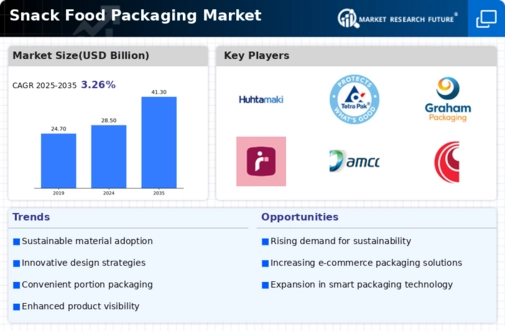

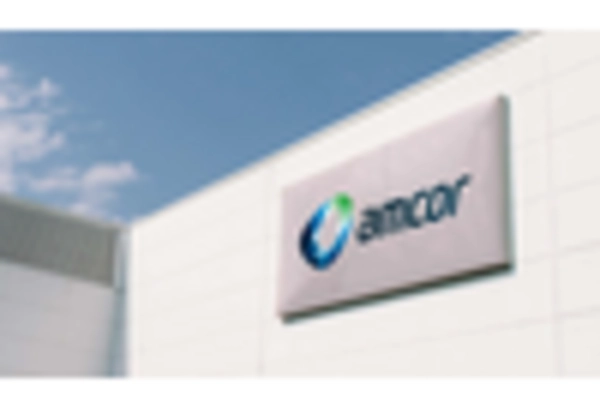
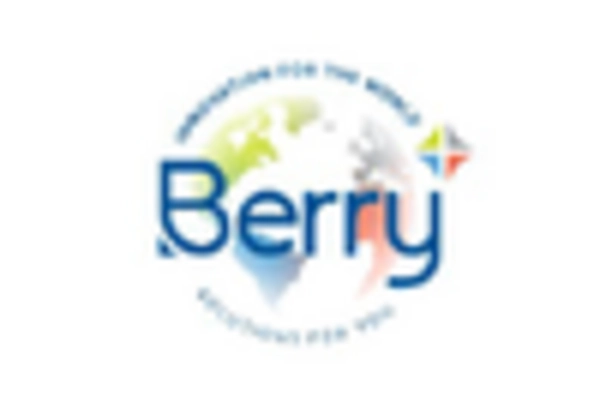
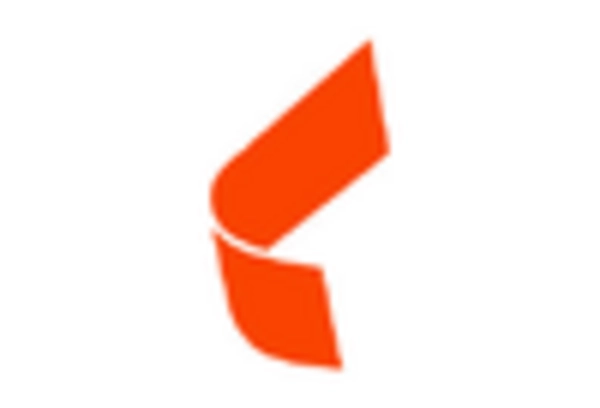
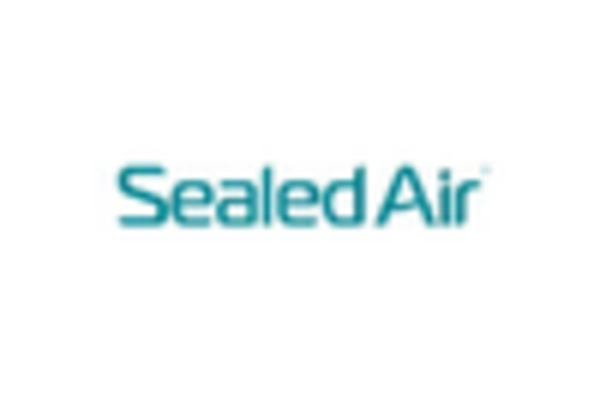
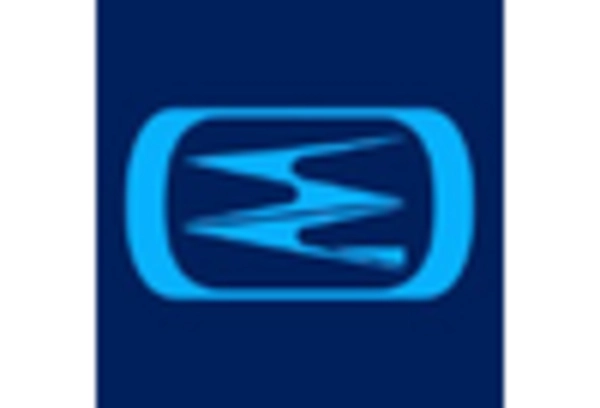
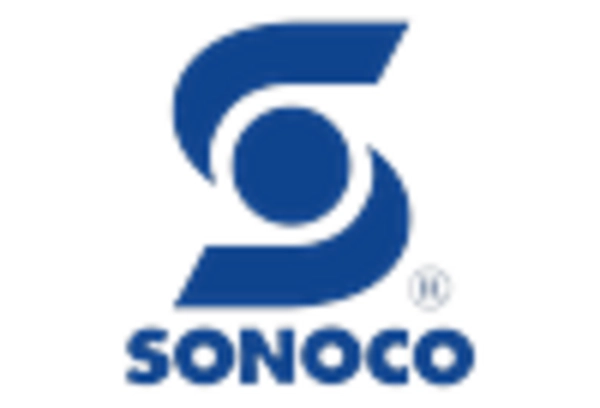

Leave a Comment